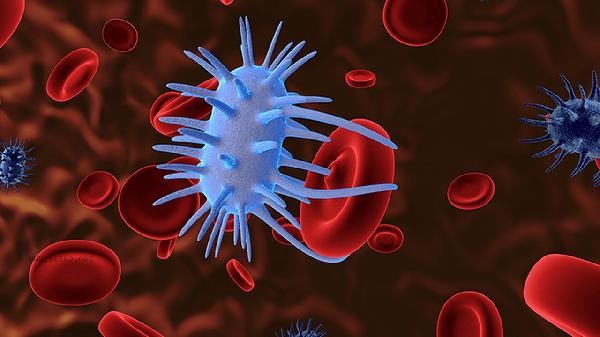Low erythrocyte sedimentation rate is usually caused by factors such as dehydration, polycythemia, sickle cell anemia, heart failure, and hypoalbuminemia.
1. Dehydration: Insufficient water in the body can lead to blood concentration, decreased plasma volume, and relatively increased red blood cells. In this case, the repulsive force between red blood cells increases, making it difficult to form a coin like aggregation and naturally slowing down the settling speed. Commonly seen in situations where body fluids are lost due to failure to replenish water in a timely manner after high-temperature work, intense exercise, or diarrhea and vomiting.

2. Erythrocytosis: When the number of red blood cells in the blood increases abnormally, the viscosity of the blood significantly increases, and the sedimentation of red blood cells is hindered. Patients with polycythemia vera often have hemoglobin levels exceeding 180g/L, and blood viscosity can reach 5-8 times that of normal individuals. At this time, the erythrocyte sedimentation rate can be reduced to below 1mm/h. Secondary erythrocytosis is common in high-altitude residents or chronic hypoxic diseases.
3. Sickle cell anemia:
Patients with hereditary hemoglobinopathy have sickle shaped red blood cells that are deformed, with stiff cell membranes and decreased oxygen carrying capacity. Abnormal red blood cells are difficult to form a normal coin shaped arrangement, and at the same time, the blood viscosity increases, leading to a significant decrease in sedimentation rate. Patients often present with clinical manifestations such as hemolytic anemia and vascular occlusion crisis.
4. Heart failure:

When heart function is impaired, circulating congestion can cause dilution of plasma protein concentration and a decrease in pro settling substances such as fibrinogen. At the same time, obstruction of venous reflux leads to a decrease in tissue fluid reflux, resulting in a relative decrease in red blood cell concentration after blood dilution. These changes will affect the formation of red blood cell clusters, resulting in a sedimentation rate lower than normal.
5. Hypofibrinogenemia:
Fibrinogen is a key plasma protein that promotes red blood cell aggregation, and its concentration below 1.5g/L significantly slows down sedimentation rate. Acquired hypofibrinogenemia is seen in severe liver disease and disseminated intravascular coagulation, while hereditary patients exhibit a lower lifetime sedimentation rate. These patients often have coagulation dysfunction such as bleeding tendency. When the erythrocyte sedimentation rate is found to be low, it is recommended to complete blood routine, liver function, cardiac ultrasound and other examinations. It is necessary to maintain sufficient water intake in daily life and avoid dehydration after intense exercise. Patients with heart failure should limit their intake of sodium salts, and patients with sickle cell anemia should pay attention to keeping warm. Patients with polycythemia can drink anticoagulant drinks such as green tea appropriately, but they need to undergo blood dilution treatment under the guidance of a doctor. All patients should regularly monitor changes in blood indicators and adjust treatment plans in a timely manner.









Comments (0)
Leave a Comment
No comments yet
Be the first to share your thoughts!